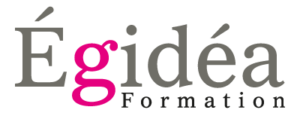
These activities also include paying cash dividends, adding or changing loans, or issuing and selling more stock. This section of the statement of cash flows measures the flow of cash between a firm and its owners and creditors. Financing activities include deals involving debt, stock, and dividends.

Why is operating cash flow important?
- 11 Financial may only transact business in those states in which it is registered, or qualifies for an exemption or exclusion from registration requirements.
- The activities include issuing and selling stock, paying cash dividends and adding loans.
- Cash-out items are those changes caused by the purchase of new equipment, buildings, or marketable securities.
- From statements to reports to analyses, there’s always a mountain of data needed for proper record-keeping and compliance.
- Major deviations from the normal cash flow trend should catch the attention of investors, who must then investigate further by diving deeper.
- Financing activities show investors exactly how a company is funding its business.
A positive cash flows from financing activities may show the business’ intentions of expansion and growth. With more money is flowing in than flowing out, a positive amount indicates an increase in business assets. The cash flow from operating activities measures the cash inflow from products and services and outflow to support the production and operations.

How HighRadius Cash Management Software can Streamline Cash Flow in Financial Statements?
- They can see this when reviewing financial statements, such as a balance sheet and income statement.
- For a company to have positive cash flow from financing activities and therefore increase it, more money must flow into the business than out.
- Remember that the indirect method begins with a measure of profit, and some companies may have discretion regarding which profit metric to use.
- The other two are cash flow from operating activities and cash flow from investing activities.
- It reflects a company’s capability to pay its debts, make shareholder payouts, and finance its growth goals.
U.S.-based companies are required to report under generally accepted accounting principles (GAAP). International Financial Reporting Standards (IFRS) are relied on by firms outside of the U.S. Below are some of the key distinctions between the two standards, which boils down to some different categorical choices for cash flow items. These are simply category differences that investors need to be made aware of when analyzing and comparing cash flow statements of a U.S.-based firm with an overseas company.
Cash Flow From Financial Activities

OCF, of course only includes operating income, whereas EBIT and EBITDA include non-operating income. However, with different methods, formulas, and ratios to research, it can be a daunting topic. Luckily, there’s a way to break everything down, so you and your team are ready to make your calculations. Your organization’s accounting processes seem full of never-ending metrics. From statements to reports to analyses, there’s always a mountain of data needed for proper record-keeping and compliance. Maintaining a healthy cash flow and understanding what is cash flow is crucial for any business owner.

- The money gained or lost on an investment over time is referred to as a return, often known as a financial return.
- A paycheck is a check that an employee receives from their employer in exchange for their services.
- The cash flow statement also encourages management to focus on generating cash.
- Positive cash flow reveals that more cash is coming into the company than going out.
- By examining the marginal revenue and marginal costs of producing an additional unit, a monopolist can determine the price and quantity that will maximise its profits.
As you can see in the Cash Flow from Financing Activities section, the issuance a long-term of debt has been recorded as a positive cash flow (inflow). On the other hand, the payment of dividends, repayments of bank borrowings, interest and lease payments have all been recorded as negative cash flows (outflow). Under IFRS, there are two allowable ways of presenting interest expense or income in the cash flow statement. Many companies present both the interest received and interest paid as operating cash flows.
Applications in Financial Modeling
Understanding where your cash is coming from and where it’s going is key for decision-making. Similarly, the statement of cash flow portrays the company’s net cash flow for a certain financial period. Other companies may also have a higher capital investment which means they have more cash outflow rather than cash inflow.
Streamline your Treasury Operations with HighRadius!
These partners in a partnership may be individuals, businesses, interest-based organizations, schools, governments, couple etc. A couple starting a business together would like to share the decisions, have few start-up costs and protect their personal assets, the business structure that would suit their needs best is Partnership. Since only the final product should be counted and the value of the intermediary good is included in the value of the final good, intermediate goods are not included in a country’s GDP calculation. The global financial crisis, which began in developing nations in late 2007, had a significant impact on developing countries. Emerging and developing economies’ economic growth sharply decreased from 13.8% in 2007 to 6.1% in 2008 and 2.1% in 2009.
High levels of debt can lead to financial distress and difficulty in meeting debt obligations. Additionally, companies with high levels of debt may have difficulty obtaining additional financing in the future. Therefore, it is important for companies to maintain a balance between debt and equity financing to ensure long-term financial stability. Investors who wish to dive into further details about the company’s debt and equity structure can take a look at the ‘liabilities’ and ‘shareholders’ equity’ sections of the company’s balance sheet. Thus, you should work hard at keeping your financial statements in order. This will show potential investors that your sales of capital assets are in good standing.
B2B Payments
Through this section of a cash flow statement, one can learn how often (and in what amounts) a company raises capital from debt and equity sources, as well as how it pays off these items over time. Investors are interested in understanding where a company’s cash is coming from. If it’s coming from normal business operations, that’s a sign of a good investment. If the company is consistently cash flow from financing activities issuing new stock or taking out debt, it might be an unattractive investment opportunity. The income statement, balance sheet, and statement of cash flows are required financial statements. These three statements are informative tools that traders can use to analyze a company’s financial strength and provide a quick picture of a company’s financial health and underlying value.



Leave a Comment